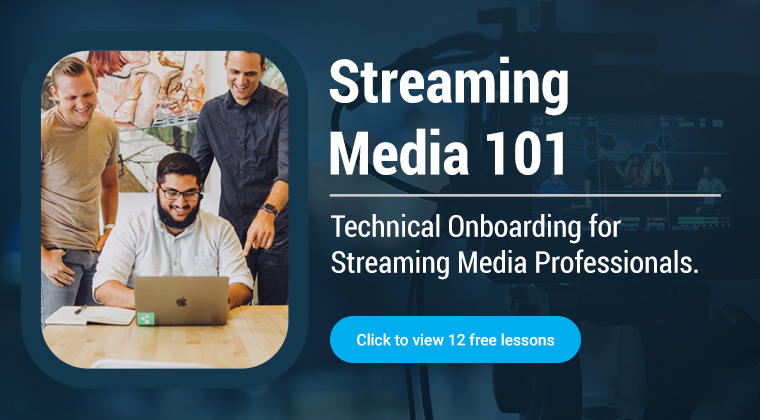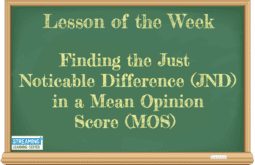Live streaming at scale is the perfect application for hardware transcoders that deliver highly-affordable encoding density. Xilinx just announced a series of transcoding appliances targeting these live streaming use cases built around the new Xilinx Real-Time (RT) Server reference architecture. I’ve been benchmarking output quality with two card-based encoders deployed in these appliances, the Alveo U30 and Alveo U50. The …
Read More »Join Me at a Webinar Discussing MediaMelon SmartPlay
MediaMelon SmartPlay is a streaming optimization solution that reduces bandwidth costs by 35% or more and improves QoE while working with your existing ABR content without re-encoding. SmartPlay works with any existing encoder, including those with content-adaptive encoding (also called per-title), and most existing players and CDNs. Briefly, SmartPlay works by analyzing the quality of your live or VOD ABR …
Read More »Lesson of the Week: Finding the Just Noticeable Difference in a MOS Score
How to Install Python 3.8 and Bento 4.
Smart TVs with AV1 Support Now Shipping
Many 2021 model Smart TVs support AV1 decoding, making it a good time to start thinking about how to encode AV1 videos. A great way to start is our course Encoding with the AV1 Codec, which details how to encode AV1 encoded video with FFmpeg (libaom-av1), the Alliance for Open Media’s standalone aomenc encoder, Intel’s SVT-AV1, and Visionular’s Aurora1. Would …
Read More »AV1 Turns 2.0
Just a quick announcement that the Alliance for Open Media has launched version 2.0 of the AOMedia AV1 encoder that you can download here. According to the Phoronix website, from which I grabbed this news: “Libaom 2.0 is the first release since the original 1.0 release back in mid-2018 after the AOMedia codec working group approved the 1.0 release. The …
Read More »Upcoming Training for Streaming Production
Here are descriptions of the two courses I’ll be teaching in a few days on streaming media production. Streaming Media East will be held online, with five 3-hour pre-conference training sessions that cost $199 each and a robust assortment of free 1-hour sessions. Here are the titles, dates, and times of the pre-conference sessions I’ll be teaching plus a short …
Read More »Third Five-Star Review for Streaming Media 101 Course
I created Streaming Media 101: Technical Onboarding for Streaming Media Professionals because there were few formal training resources for those producing streaming video or the tools and services that enable streaming media production and distribution. My goal was a course that would efficiently provide streaming media training to professionals on both sides of that fence who were new to the …
Read More »Online Training for Streaming Production, Cloud-based Streaming, and FFmpeg
Streaming media production and delivery has become even more critical over the last few months; here’s an opportunity to boost your skills and knowledge via live online training by recognized industry experts. I’m sad that Streaming Media East won’t be held in Boston as planned; I really enjoy those shows. However, Streaming Media East will be held online, with five …
Read More »New Five-Star Review for FFmpeg Book
One thing that never gets old is a five-star review on Amazon. I just received another one for my book, Learn to Produce Video with FFmpeg: In Thirty Minutes or Less (2018 Edition), which is available on Amazon ($34.95) and for PDF download ($29.95). In this review from a verified purchaser, the customer said: “I would consider this book a …
Read More » Streaming Learning Center Where Streaming Professionals Learn to Excel
Streaming Learning Center Where Streaming Professionals Learn to Excel

